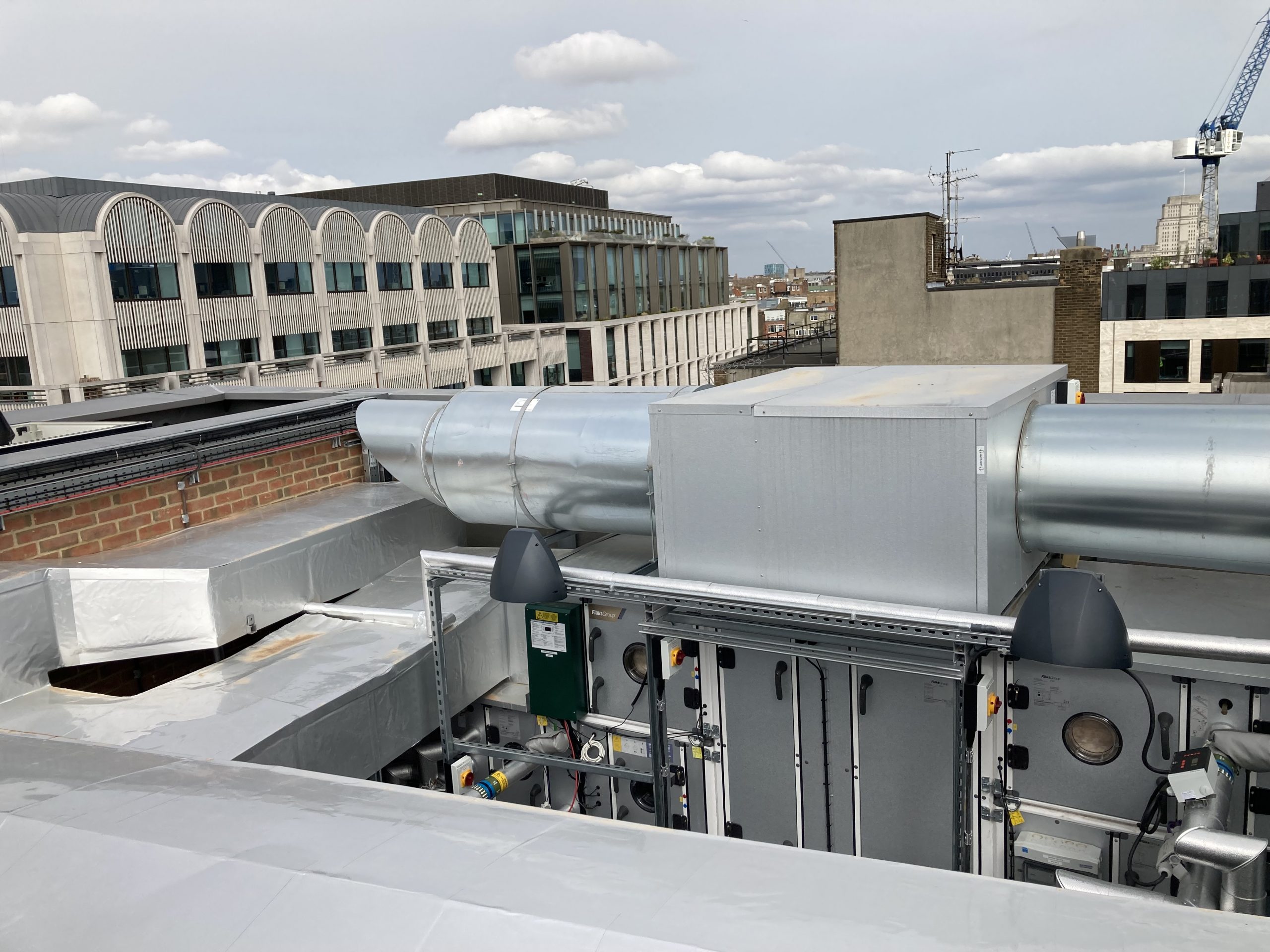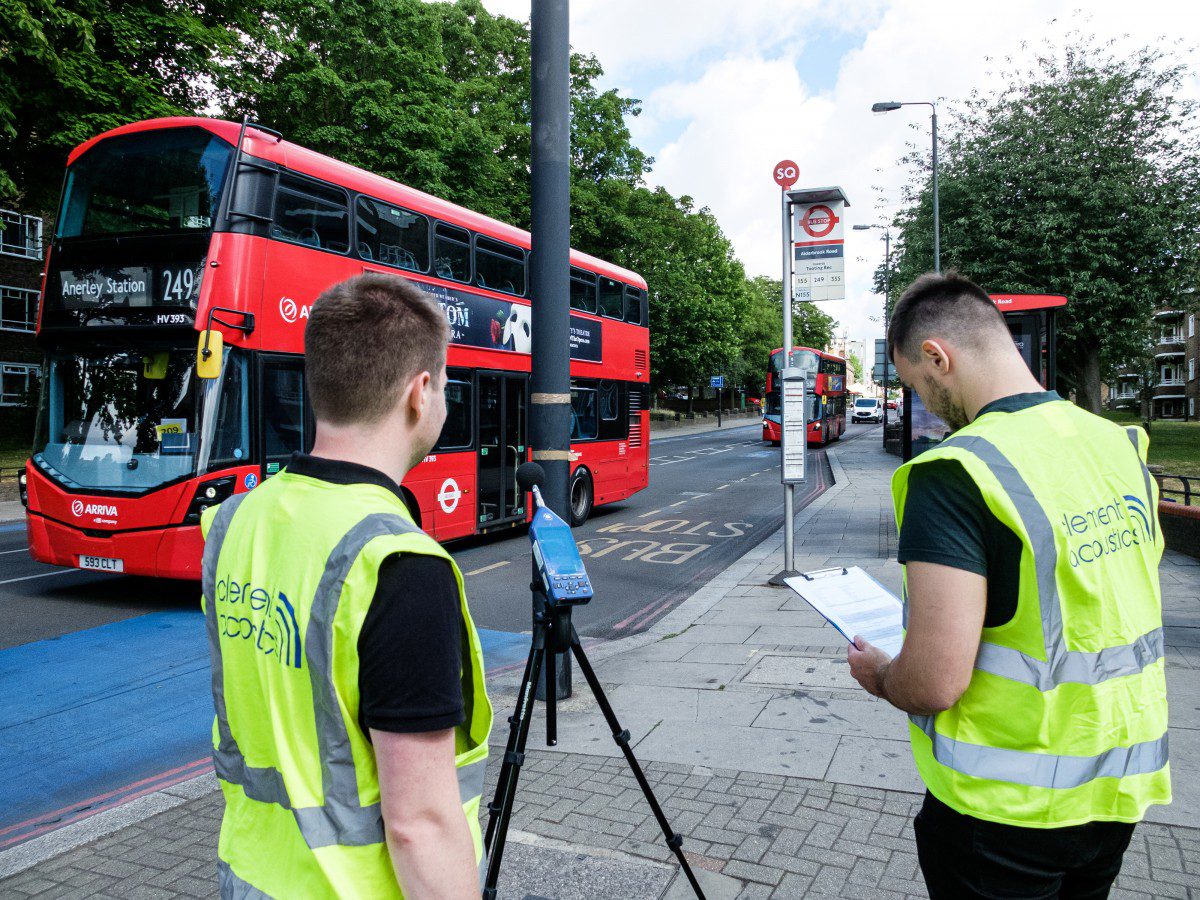Environmental noise impact assessments (NIAs) are essential for evaluating noise emissions and propagation from various sources. They help planners, developers, and policymakers make informed decisions to mitigate the adverse effects of noise on communities and the environment.
A noise impact assessment is typically requested as part of the planning application process for noise-generating and proposed noise-sensitive developments. It ensures compliance with environmental regulations and laws by delivering detailed analysis and noise management solutions. In this comprehensive guide, we’ll explore the importance of noise impact assessments, how they’re conducted, how often they’re required, and more.
At Clement Acoustics, we offer high-quality noise impact assessments and acoustic surveys across London, Manchester and the rest of the UK, tailored to your project. Our assessments follow the guidelines provided in The National Planning Policy Framework (NPPF) and associated Planning Practice Guidance – Noise (PPG-N) and relevant British Standards.
Contact us for a free quote and to book your assessment at a convenient time and a competitive price.
What is a noise impact assessment?
A noise impact assessment evaluates the potential impacts of noise from various sources on the surrounding environment and noise sensitive receivers. It involves a systematic approach to measuring, analysing, and interpreting noise levels to determine whether they pose a risk to quality of life or the environment.

During a noise impact assessment, different types of noise are scrutinised depending on the source and setting:
- Background noise level: This is the background level in an environment without any intrusive noise. It sets a baseline noise climate against which other noise is measured.
- Industrial noise: This comes from facilities such as factories, plants, and industrial sites where machinery and production activities create continuous or intermittent noise.
Noise impact assessments matter and are crucial for environmental planning and safeguarding community health. By predicting adverse noise impacts and offering noise mitigation measures, they ensure that public health and environmental quality aren’t compromised, proactively contributing to sustainable developments.
Whilst assessments are required for large-scale urban development (property construction, airports, roads, industrial operations, entertainment venues, construction sites), they are also typically needed before installing air conditioning condensers, air source heat pumps, generators, and extractor fans.
How a noise impact assessment is conducted
Qualified acoustic engineers should always conduct a noise impact assessment using a detailed and systematic approach, following the appropriate British Standards and local planning policies. Whilst assessments are tailored to each project, they will generally follow this step-by-step approach:
Scope and objectives defined
The scope of the assessment is defined, including the geographic area, the noise sources to be studied, and the specific objectives of the assessment for the proposed development. Then, sensitive receptors in the region, such as residential communities, schools, or hospitals, that may be affected by noise are identified.
Background information gathered
Existing data on background noise levels are collected to establish a baseline. This may involve reviewing previous studies, environmental data, and local noise regulations. The noise source’s operational characteristics, such as its hours of operation and peak noise-producing activities, must also be understood.
Appropriate equipment and technology selected
Suitable noise measurement equipment, such as sound level meters that comply with international standards (e.g. ANSI or IEC), should be chosen. These devices should then be calibrated correctly to deliver accurate results. Advanced technologies like noise mapping software for visualising potential impact areas can be very beneficial.
Field measurements
Noise measurements are performed at various locations and times to capture variations in noise levels due to different operational conditions or environmental factors. Data is systematically recorded, noting the time, location, and environmental conditions during each measurement session.
Data analysis
The collected noise data is analysed to assess the levels relative to baseline conditions and regulatory limits. Statistical methods evaluate the frequency, duration, and intensity of noise exposures. Noise modelling techniques are employed to predict future noise scenarios based on potential changes in the operation or environment.
Mitigation strategies developed
Based on the analysis, mitigation measures to reduce noise levels are proposed, such as installing sound barriers, modifying operational practices, or using quieter machinery. Both the technical feasibility and cost-effectiveness of the proposed mitigation measures are considered.
Report findings and recommendations
A comprehensive noise impact assessment report includes methodology, results, analysis, and recommendations. It should clearly communicate the impact on the existing noise climate, community and the environment and outline actionable steps to mitigate adverse effects. Visuals such as graphs, maps, and tables can support the findings and enhance the report’s readability.
Best practices for assessments
Adhering to best practices can improve the effectiveness of noise impact assessments, leading to more accurate results and more successful management of noise pollution.
First, you should choose certified acoustic professionals who deeply understand noise dynamics and regulatory compliance, ensuring that assessments are conducted professionally and objectively.

As part of their assessment, they should:
- Use properly calibrated equipment.
- Use systematic data collection methods (record noise levels over different times and conditions to capture variations accurately).
- Offer effective mitigation strategies to prevent unwanted or disturbing sound.
For mitigation measures to be effective, they must be tailored to the specific sources and impacts identified in the assessment, and the community must be considered when designing mitigation strategies to enhance their acceptance and effectiveness.
It is a good idea to regularly monitor noise levels after mitigation measures are implemented. This step allows for adjustments and refinements based on real-world effectiveness and community feedback.
What standards and regulations are considered?
Several vital standards and regulations exist for noise impact assessments in the UK. These standards ensure that noise levels are controlled to prevent harm to human health and disruption to daily life.
Here are the primary regulations and guidelines typically involved:
- BS4142: 2014: This British Standard is crucial for evaluating the potential impact of sound from industrial and commercial sources on residential areas. It provides methods for rating mixed sources of industrial noise, compared to background noise levels, and assessing the likelihood of complaints from nearby residents.
- BS8233: 2014: This British Standard provides guidance on managing and controlling noise within buildings. It offers recommendations on designing buildings to achieve acceptable levels of noise for various indoor environments, ensuring comfort and functionality.
- The Noise at Work Regulations 2005: These regulations apply to the workplace and require employers to prevent or reduce risks to health and safety from noise exposure. This is relevant for noise impact assessments related to occupational environments.
- National Planning Policy Framework (NPPF): The NPPF instructs local planning authorities to avoid noise giving rise to significant adverse impacts on health and quality of life due to new development.
- Local Plans: Local councils may have specific policies and criteria for noise that need to be considered, typically outlined in their local development frameworks or plans.
- Planning Practice Guidance – Noise (PPG-N): Guidelines issued by the UK government to assist local authorities in managing noise issues within the context of planning decisions.
- Environmental Protection Act 1990: This act serves as the foundation for local authorities to manage noise issues, providing a framework for dealing with statutory nuisances, including noise pollution.
- The Control of Pollution Act 1974: This legislation includes specific provisions for controlling noise on construction and demolition sites, requiring that work be carried out to minimise noise as far as practicable.
These regulations and standards ensure noise impact assessments align with community standards and legal requirements.
How often do I need a noise impact assessment?
The frequency of conducting an assessment largely depends on the nature of the project, any operational changes, and the specific environmental or community circumstances.
A noise impact assessment is often necessary for commercial equipment, construction noise and housing development projects. Industrial operations typically require assessments where any notable change in operations occur. For major transport infrastructures like highways, railways, or airports, periodic assessments before and after the project are crucial to gauge the impacts of traffic increases or infrastructure modifications.

How long does a noise impact assessment take to carry out?
For smaller projects or those in less complex environments, a noise impact assessment’s on-site measurements might take a couple of hours to 24-48 hours to complete, with additional time required for the initial planning stage, data analysis, and final report preparation.
Larger or more complex projects, such as major industrial sites or large-scale infrastructure developments, might require several days or weeks. These assessments involve extensive monitoring, more sophisticated data analyses, and detailed mitigation strategy development. They may also need more time if stakeholder engagement, such as public consultations and feedback, is necessary.
In cases where continuous noise monitoring is necessary, the assessment process can be integrated into a noise management strategy that spans the project’s or operation’s lifetime, which may extend over several years.
It is advisable to consult directly with a firm specialising in environmental noise assessments to obtain a more accurate estimate for a specific project and a tailored timeline based on its particular details and scope.
Book your noise impact assessment with Clement Acoustics
If you require a noise impact assessment or acoustic survey in London or Manchester, or anywhere else in the UK, our fully trained and experienced acoustic consultants are available to test your proposed development, project, or installation. We pride ourselves on offering a high-quality, expert service with minimal disruption, using state-of-the-art equipment and processes.
A noise impact assessment report from us will accurately predict noise levels and suggest effective noise mitigation measures while adhering to all relevant standards and regulations. At Clement Acoustics, you will also benefit from a quick turnaround, competitive pricing, and a helpful approach that offers customer satisfaction.
To learn more about what we do, look at examples of our recent work and speak to one of our team on 0203 475 2280 (South) or 0161 850 2280 (North). We look forward to hearing from you.
Your content goes here. Edit or remove this text inline or in the module Content settings. You can also style every aspect of this content in the module Design settings and even apply custom CSS to this text in the module Advanced settings.
